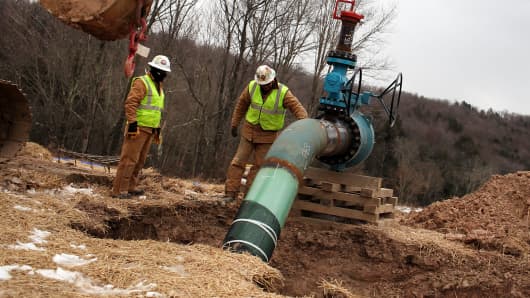Global shale resources are vast enough to cover more than a decade of oil consumption, according to the first-ever U.S. assessment of reserves from Russia to Argentina.
The U.S. Department of Energy estimated "technically recoverable" shale oil resources of 345 billion barrels in 42 countries it surveyed, or 10 percent of global crude supplies. The department had previously only provided an estimate for U.S. shale reserves, which it on Monday increased from 32 billion barrels to 58 billion.
The pace of oil and gas production gains has consistently surprised forecasters since horizontal drilling and hydraulic fracturing, better known as "fracking", were pioneered in U.S. shale rock formations about ten years ago. Only the U.S. and Canada were producing oil and natural gas from shale in commercial quantities, the department said.
(Read More: Oil to Extend Gains Despite Mixed Data)
Monday's assessment indicated that Russia has the largest shale oil resource, with 75 billion barrels. Russia and the U.S. were followed by China at 32 billion, Argentina at 27 billion and Libya at 26 billion.
The report said gas from shale formations increased world natural gas resources by 47 percent to 22,882 trillion cubic feet.
The question of whether other countries can replicate North America's success in drilling in shale rocks has captivated geologists and diplomats. U.S. crude imports are at a 16-year low, reconfiguring the map of global oil trade.
"Looking at shale resources has typically been understated by outside market participants because the geology is new and the technology is growing rapidly," said Edward Morse, head of commodities research at Citigroup.
(Read More: Transposition Woes Keep US Oil Prices High )
Production from shale has helped keep a lid on crude oil prices at about $120 a barrel, giving western countries leverage to impose sanctions on Iran, a key supplier. World oil demand is about 90 million barrels a day, suggesting the world shale oil resource covers 10.5 years of consumption.


